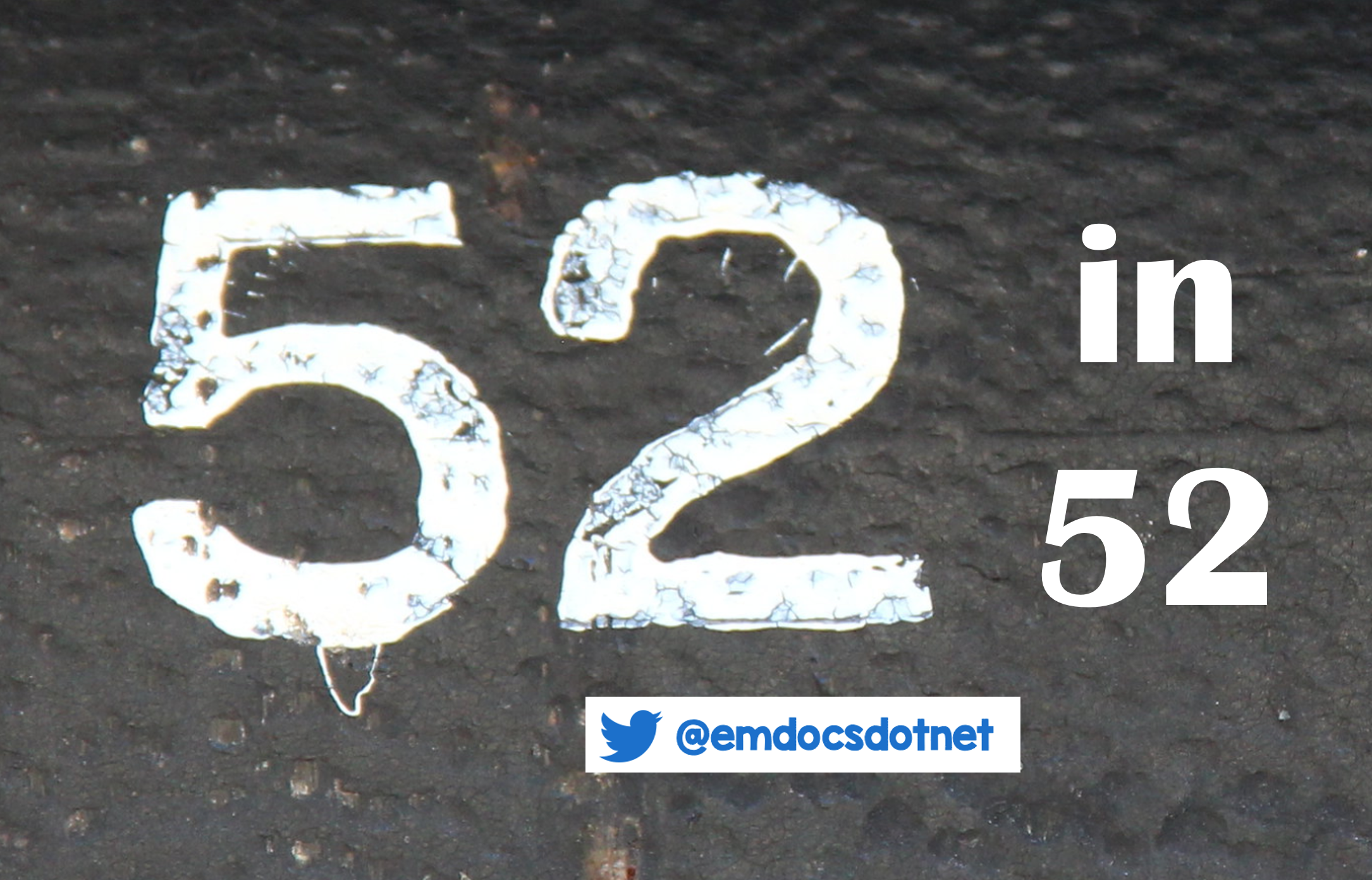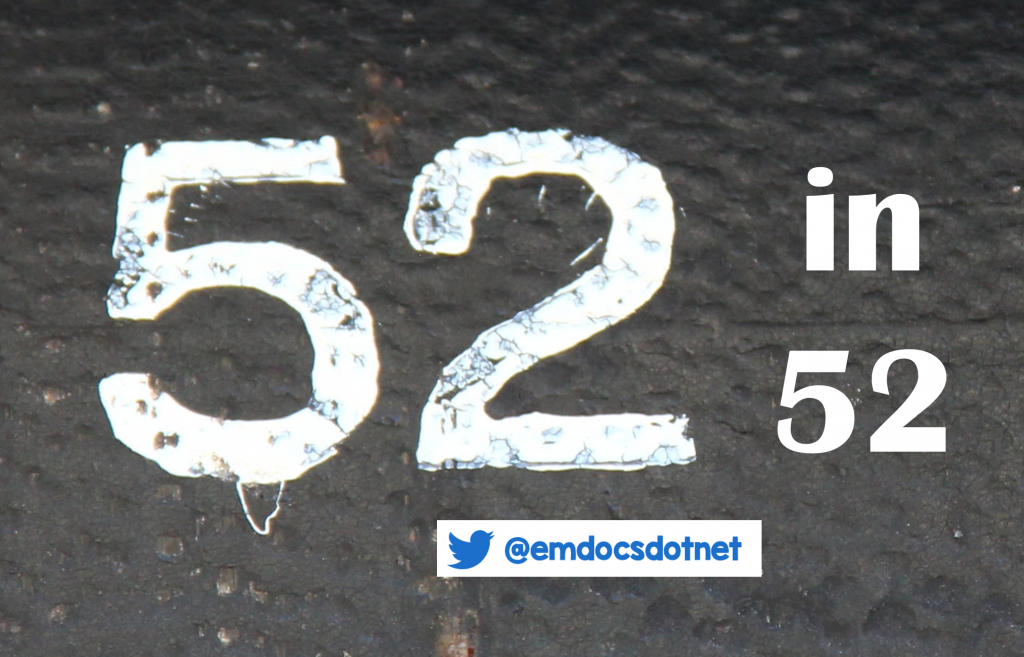Welcome back to the “52 in 52” series. This collection of posts features recently published must-know articles. Our third post looks at BICAR-ICU.

Authors: Sarah Mongold, MD (Chief Resident, Emergency Medicine Physician, San Antonio, TX); Brannon Inman (Chief Resident, Emergency Medicine Physician, San Antonio, TX) // Reviewed by: Alex Koyfman, MD (@EMHighAK); Brit Long, MD (@long_brit)
Sodium bicarbonate therapy for patients with severe metabolic acidaemia in the intensive care unit (BICAR-ICU): a multicenter, open-label, randomized controlled, phase 3 trial
AKA: BICAR-ICU
Clinical question:
In critically ill patients with severe metabolic acidemia, does sodium bicarbonate infusion compared with no infusion reduce mortality by day 28 and the presence of at least one organ failure at day 7?
Study design:
- Multicenter open label randomized controlled phase-3 trial
- An a priori analysis of patients with Acute Kidney Injury Network (AKIN) score of 2 or 3 was also performed
PICO:
Population:
- 26 intensive care units in France; 389 patients with severe acidemia included (out of 942 initially assessed)
- > 18 years of age
- Severe acidemia (pH ≤7·20, PaCO2≤45 mm Hg, and sodium bicarbonate concentration ≤20 mmol/L)
AND
- SOFA 4+ OR lactate 2 mmol/L or more
- Exclusion criteria:
- already received bicarb
- ketoacidosis
- chronic renal failure
- need immediate RRT
- patients with an acid ingestion (i.e., ASA toxic ingestion)
- actively losing bicarb in urine or stool
- Note: Most patients were mechanically ventilated (> 82%) and on vasopressors (> 79%)
Intervention:
- Bicarb infusion to maintain pH above 7.3
- Protocol recommendation: 4.2% bicarb in 125-250 mL infusions over 30 minutes. Max 1,000 mL in 24 hours (NOTE: in the U.S. we typically use amps of 8.3% bicarb (50 mL) from the crash cart; 3 amps in D5W or sterile water leads to a concentration of 1.3%)
Comparator:
- No bicarb infusion
Outcome:
- Primary outcome = death from any cause by day 28 AND presence of at least one organ failure at day 7
- Primary outcome occurred in 71% of patients in control group, 66% of the bicarb treatment group (p = 0.24)
- Secondary outcomes = need for dialysis, effect on hyperkalemia
- Target pH achieved in 60% of bicarb group and 26% of comparator group
- For AKIN score 2 or 3: 28-day survival 65% in bicarb group vs. 46% in control group (95% CI 52-72, p = 0.0283), use of renal replacement therapy in ICU 73% in bicarb group vs. 51% (P = 0.002)
Randomization:
- Randomly stratified into no bicarb group or bicarb group
- Analysis done on intention-to-treat population
- Groups had similar characteristics in terms of proportion that were post arrest, septic shock, hemorrhagic shock, mechanical ventilation, need for pressors
Take away:
- This is an open label ICU study conducted in one country; thus, be careful when applying to the ED population
- In total, there was no statistically significant difference in survival between control group and bicarb group
- When evalauted based on AKIN score/renal injury, there was a statistically significant difference between control group and bicarb group (37% survival vs 54% survival, respectively) for patients with AKIN score 2 or 3 only (more severe kidney injuries)
- Bicarb group had higher rates of metabolic alkalosis, hypernatremia, and hypocalcemia but no life-threatening complications
- Secondary outcome: Bicarb did reduce need for dialysis from 52% to 35%, and among those who needed it, bicarb delayed initiation for an additional 12 hours
My take:
- Based on the results of this trial there is no indication to use bicarb to correct pH in all comers with undifferentiated acidemia.
- The key is to treat the underlying cause of the acidemia.
- There is likely a specific patient population that would benefit from bicarb infusion (NAGMA, uremic renal failure) that was not specifically elucidated in this trial.
- Bicarb infusion is likely helpful in those with AKIN score of 2 or 3.
- Based on this trial, bicarb should be viewed as a renal preserving therapy and RRT delaying therapy, rather than a life prolonging therapy in patients with severe acidemia.
- If a patient has a severe kidney injury and you or your consultant think they will benefit, or nephrology asks for it, consider 500-1000 mL of 1.3% bicarb (3 amps of sodium bicarb in 1L D5W administered over 1 hour).
Reference:
- Jaber S, Paugam C, Futier E, et al; BICAR-ICU Study Group. Sodium bicarbonate therapy for patients with severe metabolic acidaemia in the intensive care unit (BICAR-ICU): a multicentre, open-label, randomised controlled, phase 3 trial. Lancet. 2018 Jul 7;392(10141):31-40. doi: 10.1016/S0140-6736(18)31080-8.






